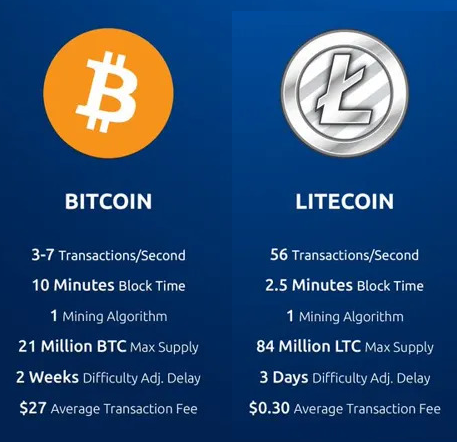
When looking at the benefits and risks of yield farming, a common question investors ask is "Should I invest in DeFi?" There are many reasons to do so. One of these is the potential for yield farm to produce significant profits. Early adopters will be able to receive high token rewards, which can increase in value. These token rewards can be sold for a profit and reinvest the profits to earn more income than usual. Yield farming is an investment strategy that has proven to generate more interest than conventional banks. But there are risks. DeFi is more risky than traditional banks because interest rates can fluctuate.
Investing into yield farming
Yield Farming, an investment strategy that rewards investors with tokens in exchange for a share of their investments, is called Yield Farming. The tokens are able to increase in value quickly and can either be resold at a profit or reinvested. Yield Farming offers higher returns than other investments, but there are high risks and Slippage. Furthermore, an annual percentage rate is not accurate during periods of high volatility in the market.
The DeFi PulSE site is a great way to assess the performance of Yield Farming projects. This index reflects the total value of cryptocurrencies locked in DeFi lending platforms. It also represents the total liquidity of DeFi liquidity pools. Many investors use TVL to analyze Yield Farming projects. This index can also be found on DEFI PULSE. Investors are confident in this type project's future and the index has grown.
Yield farming is an investment strategy which uses decentralized platforms for liquidity. Yield farming is a different investment strategy than traditional banks. It allows investors to generate significant amounts of cryptocurrency using idle tokens. This strategy is based on smart contracts and decentralized exchanges, which allow investors automate financial transactions between two parties. Investors who invest in a yield-farm can receive transaction fees, governance tokens, interest, and interest through a lending platform.

Find the right platform
Although it might seem like an easy process, yield farming can be difficult. Among the many risks associated with yield farming is the possibility of losing your collateral. DeFi protocols are often built by small teams, with limited budgets. This increases bugs in the smart contracts. There are ways to mitigate yield farming risks by choosing the right platform.
The term yield farming refers to a DeFi app that allows you borrow and lend digital assets via a smart contract. These platforms offer crypto holders trustless options and allow them to lend their holdings to other users using smart contracts. Each DeFi application comes with its own functionality and unique characteristics. These differences will impact how yield farming is done. In short, each platform offers different rules and conditions for borrowing and lending crypto.
Once you've identified the right platform, you can start reaping the rewards. A liquidity pool is a key component of a successful yield farming strategy. This is a system of smart contracts that powers a marketplace. Users can borrow or exchange tokens on this platform to earn fees. Users are paid for lending their tokens. However, if you're looking for a simple way to begin yield farming, it's a good idea to start with a smaller platform that allows you to invest in a more diverse range of assets.
To measure platform health, you need to identify a metric
A key factor in the success and sustainability of the industry is the identification of a measurement to determine the health of a platform for yield farming. Yield farming is the process by which you can earn rewards from cryptocurrency holdings. This process is similar to staking. Yield farming platforms partner with liquidity providers to add funds into liquidity pools. Liquidity providers are paid a commission for their liquidity services, typically through the platform's fees.

A metric that can determine the health of a yield farming platform is liquidity. Yield farming is a form of liquidity mining, which operates on an automated market maker model. In addition to cryptocurrencies and tokens, yield farming platforms offer tokens which are tied to USD or another stablecoin. Rewards for liquidity providers are based on how much they have provided and the rules that govern the trading.
A key step to making an investment decision is to determine a measure that will be used to evaluate a yield farm platform. Yield farm platforms are highly volatile, and can be subject to market fluctuations. However, yield farming can mitigate these risks because it is a form staking. Users must stake cryptocurrencies in exchange for a fixed amount. Yield farming platforms are risky for both lenders and borrowers.
FAQ
What Is A Decentralized Exchange?
A decentralized exchange (DEX) is a platform that operates independently of a single company. Instead of being run by a centralized entity, DEXs operate on a peer-to-peer network. Anyone can join the network to participate in the trading process.
Where will Dogecoin be in 5 years?
Dogecoin remains popular, but its popularity has decreased since 2013. Dogecoin's popularity has declined since 2013, but we believe it will still be popular in five years.
PayPal is a good option to purchase crypto.
You cannot buy crypto using PayPal or credit cards. However, there are many options to obtain digital currencies. You can use an exchange service such Coinbase.
Statistics
- As Bitcoin has seen as much as a 100 million% ROI over the last several years, and it has beat out all other assets, including gold, stocks, and oil, in year-to-date returns suggests that it is worth it. (primexbt.com)
- Ethereum estimates its energy usage will decrease by 99.95% once it closes “the final chapter of proof of work on Ethereum.” (forbes.com)
- While the original crypto is down by 35% year to date, Bitcoin has seen an appreciation of more than 1,000% over the past five years. (forbes.com)
- For example, you may have to pay 5% of the transaction amount when you make a cash advance. (forbes.com)
- That's growth of more than 4,500%. (forbes.com)
External Links
How To
How to invest in Cryptocurrencies
Crypto currencies are digital assets that use cryptography (specifically, encryption) to regulate their generation and transactions, thereby providing security and anonymity. Satoshi Nagamoto created Bitcoin in 2008. There have been numerous new cryptocurrencies since then.
The most common types of crypto currencies include bitcoin, etherium, litecoin, ripple and monero. There are many factors that influence the success of cryptocurrency, such as its adoption rate (market capitalization), liquidity, transaction fees and speed of mining, volatility, ease, governance and governance.
There are many ways to invest in cryptocurrency. The easiest way to invest in cryptocurrencies is through exchanges, such as Kraken and Bittrex. These allow you to purchase them directly using fiat currency. You can also mine your own coin, solo or in a pool with others. You can also buy tokens via ICOs.
Coinbase, one of the biggest online cryptocurrency platforms, is available. It allows users to store, trade, and buy cryptocurrencies such Bitcoin, Ethereum (Litecoin), Ripple and Stellar Lumens as well as Ripple and Stellar Lumens. It allows users to fund their accounts with bank transfers or credit cards.
Kraken is another popular exchange platform for buying and selling cryptocurrencies. It supports trading against USD. EUR. GBP. CAD. JPY. AUD. Trades can be made against USD, EUR, GBP or CAD. This is because traders want to avoid currency fluctuations.
Bittrex, another popular exchange platform. It supports more than 200 cryptocurrencies and offers API access for all users.
Binance is an older exchange platform that was launched in 2017. It claims to be the world's fastest growing exchange. It currently trades over $1 billion in volume each day.
Etherium runs smart contracts on a decentralized blockchain network. It relies upon a proof–of-work consensus mechanism in order to validate blocks and run apps.
Accordingly, cryptocurrencies are not subject to central regulation. They are peer–to-peer networks which use decentralized consensus mechanisms for verifying and generating transactions.